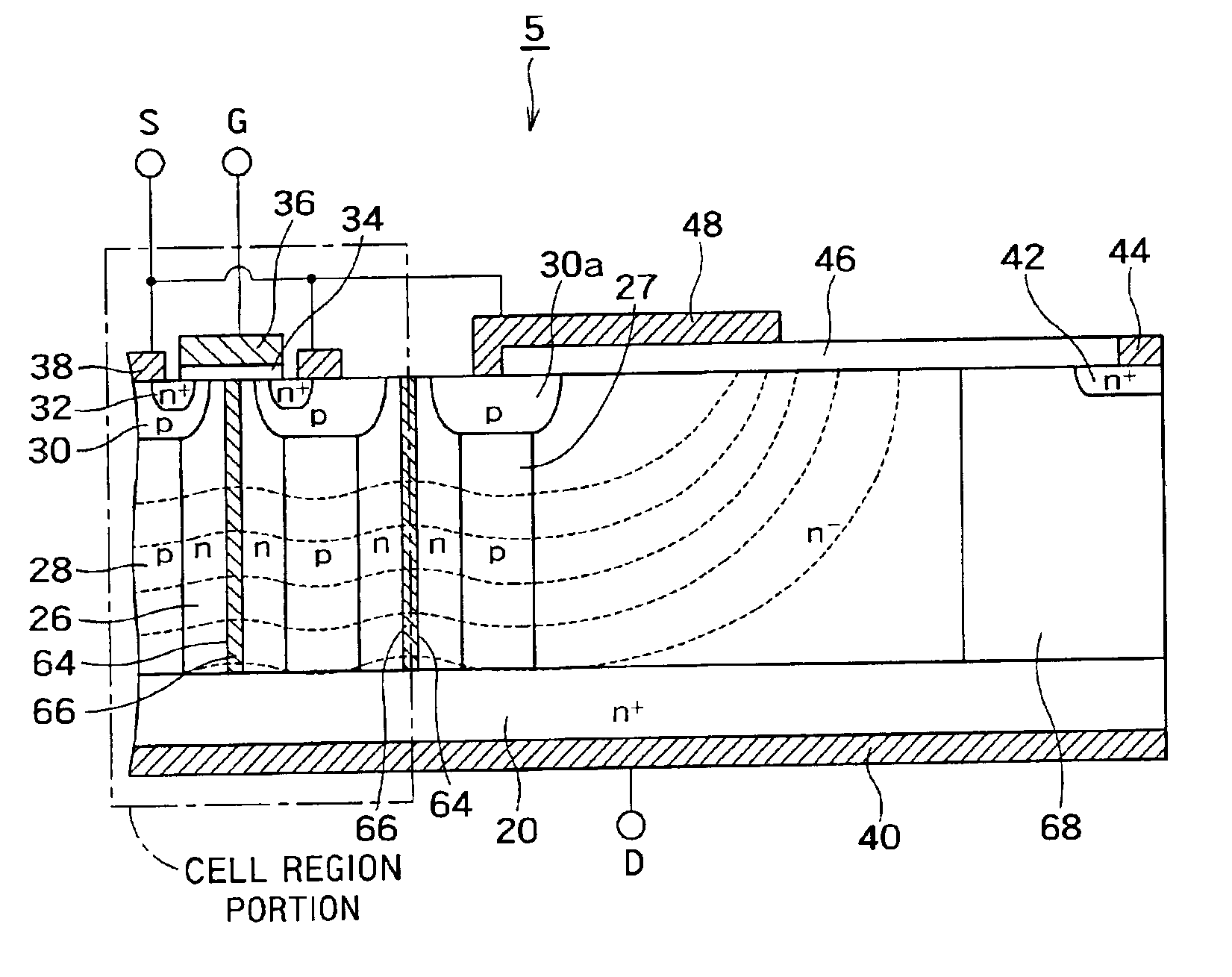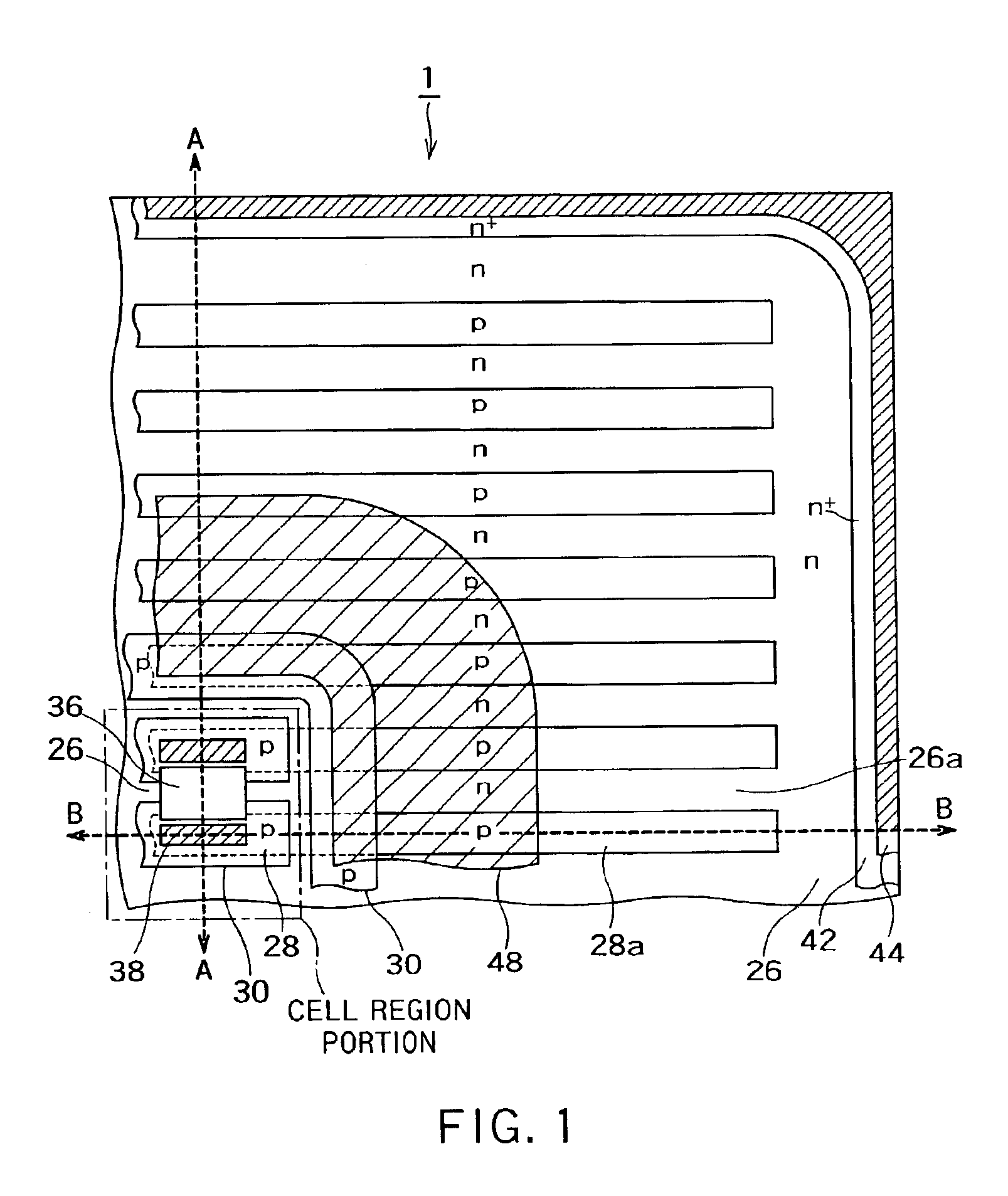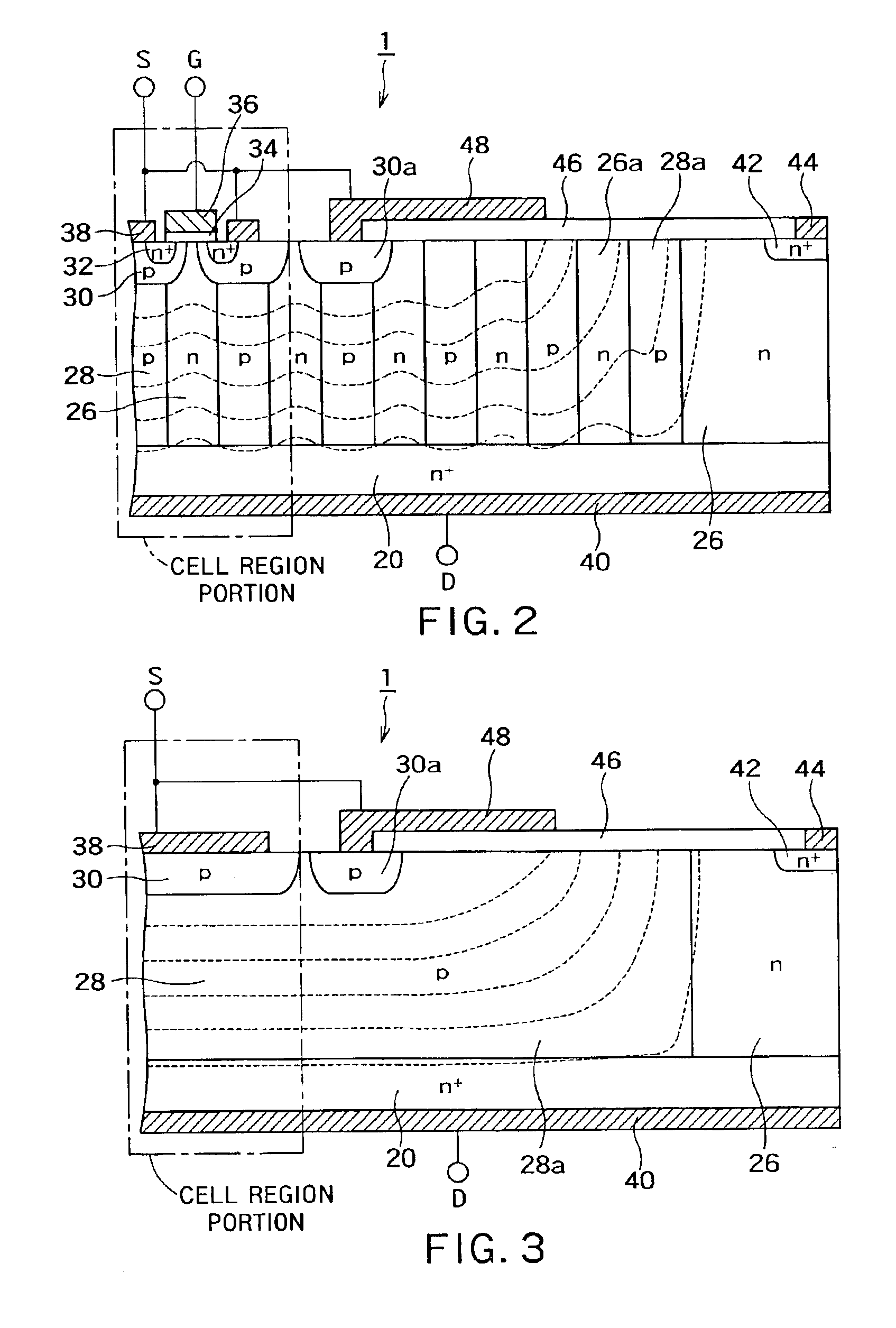Semiconductor device with super junction region
a technology of super junction region and semiconductor device, which is applied in the direction of semiconductor device, basic electric element, electrical apparatus, etc., can solve the problems of device breaking, device with high breakdown voltage disadvantageous in on-state resistance, and no structure developed
- Summary
- Abstract
- Description
- Claims
- Application Information
AI Technical Summary
Benefits of technology
Problems solved by technology
Method used
Image
Examples
first embodiment
(1) First Embodiment
FIG. 1 is a plan view showing a schematic structure of a first embodiment of the semiconductor device according to the present invention. FIG. 2 and FIG. 3 are cross-sectional views of the semiconductor device of the present embodiment along taken along the cutting lines A—A and B—B of FIG. 1, respectively. As is clear in comparison with FIG. 36, the semiconductor device 1 of the present embodiment is characterized in that n− type drift layers 26 and p-type drift layers 28 are formed not only in a cell region portion, but are formed also up to the vicinity of the periphery of a junction terminating region portion. Hereinafter, the structure of the semiconductor device 1 of the present embodiment will be described in even more detail.
The semiconductor device 1 of the present embodiment has an n+ type drain layer 20, a drain electrode 40, the n type drift layers 26, the p type drift layers 28, p type base layers 30, an n+ type source layer 32, a source electrode 38...
second embodiment
(2) Second Embodiment
FIG. 4 is a plan view showing a schematic structure of a second embodiment of a semiconductor device according to the present invention. FIG. 5 and FIG. 6 are cross-sectional views of the semiconductor device of the present embodiment taken along the cutting lines A—A and B—B of FIG. 4, respectively.
The semiconductor device 2 of the present embodiment has, in place of the fieldplate electrode 48 which the semiconductor 1 shown in FIG. 1 has, a p− type resurf layer 52 which is connected to the p type base layer 30a disposed so as to surround the cell region in the junction terminating region portion, and which is formed so as to further surround the p type base layer 30a. The other structures of the semiconductor device 2 are substantially the same as those of the semiconductor device 1 shown in FIG. 1.
As shown by the equipotential lines in FIG. 2 and FIG. 3, also by providing such a p− type resurf layer 52, the electric field is attenuated at the time when the d...
third embodiment
(3) Third Embodiment
FIG. 7 is a plan view showing a schematic structure of a third embodiment of a semiconductor device according to the present invention. Note that a cross-sectional view taken along the cutting line A—A in the view is substantially the same as FIG. 2.
The semiconductor device 3 of the present embodiment is characterized in that p type drift layers 54, 54a have a circular plane shape, which is different from the above-described embodiments. Due to the p type drift layers being structured in such a shape, the depletion layers can be extended in all directions in a plane which is horizontal to the surface of the device.
Note that, in FIG. 7, although an example of circular patterns is shown, there may be polygonal patterns such as quadrangular patterns, hexagonal patterns, or the like. Further, it may be formed such that the n type drift layers 26 have a pattern. Further, in the same way as in the above-described second embodiment, a resurf layer can be applied in plac...
PUM
 Login to View More
Login to View More Abstract
Description
Claims
Application Information
 Login to View More
Login to View More - R&D
- Intellectual Property
- Life Sciences
- Materials
- Tech Scout
- Unparalleled Data Quality
- Higher Quality Content
- 60% Fewer Hallucinations
Browse by: Latest US Patents, China's latest patents, Technical Efficacy Thesaurus, Application Domain, Technology Topic, Popular Technical Reports.
© 2025 PatSnap. All rights reserved.Legal|Privacy policy|Modern Slavery Act Transparency Statement|Sitemap|About US| Contact US: help@patsnap.com



